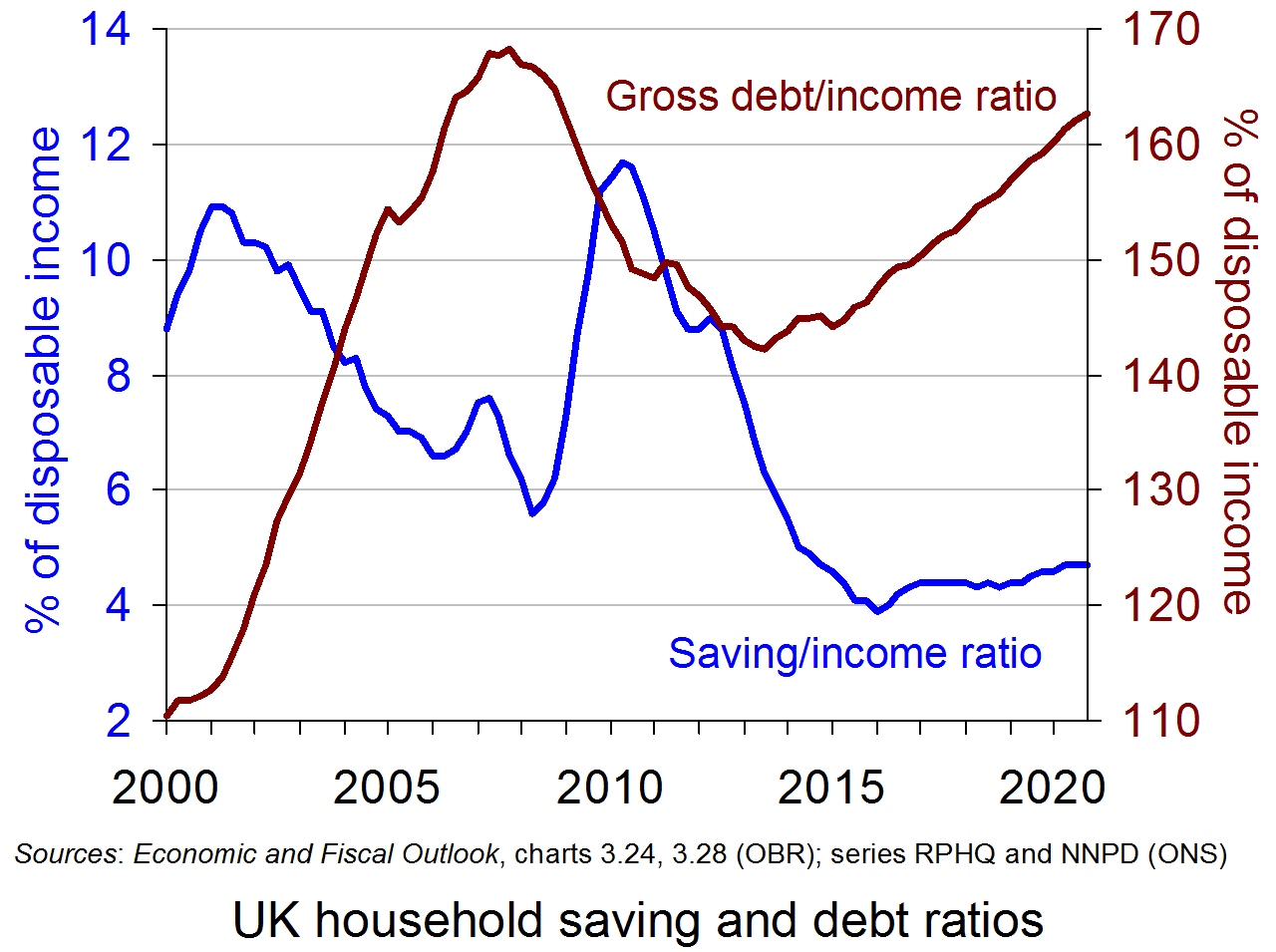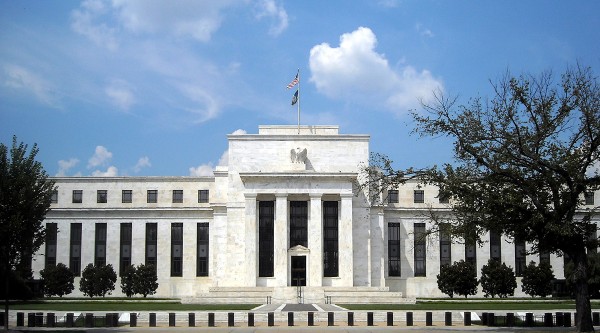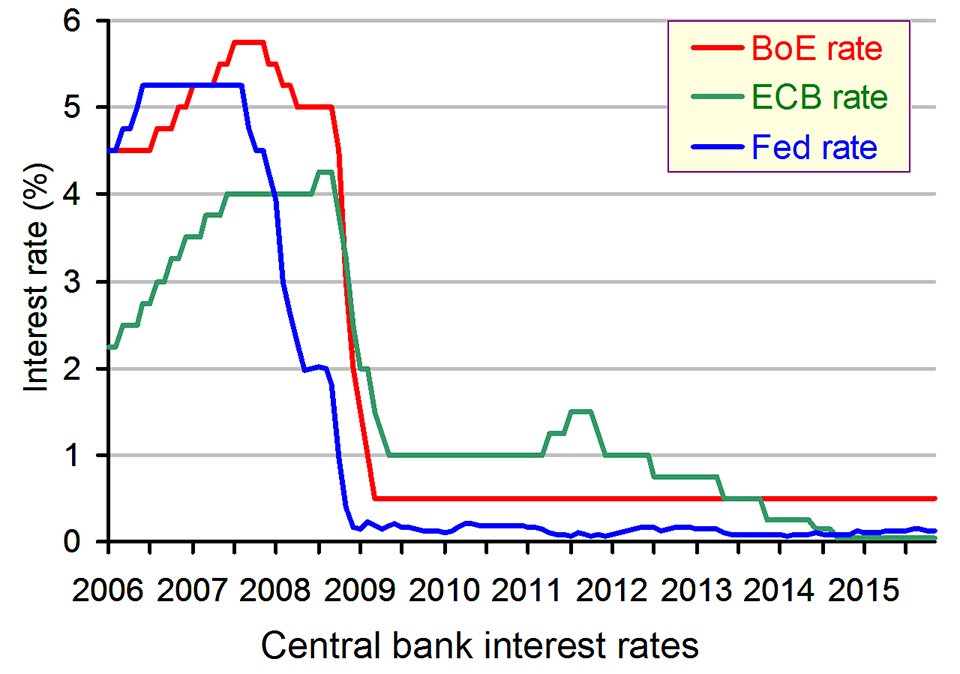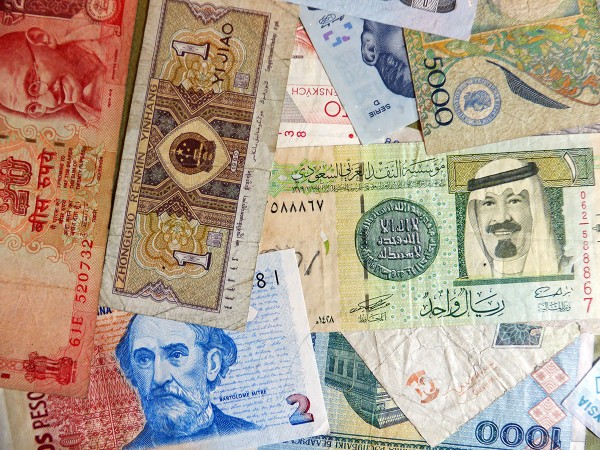 George Osborne in his recent Autumn Statement, once again stressed that ‘the government is committed to strong, sustainable and balanced growth’. But while he plans to reduce government debt as a percentage of GDP, consumer debt is rising, both absolutely and as a percentage of household disposable income. The rise in household borrowing, and the resulting rise in consumer expenditure, has been the main factor driving economic growth. It has not been exports nor, until recently, investment, as the Chancellor had hoped. Indeed, investment in new housing is falling.
George Osborne in his recent Autumn Statement, once again stressed that ‘the government is committed to strong, sustainable and balanced growth’. But while he plans to reduce government debt as a percentage of GDP, consumer debt is rising, both absolutely and as a percentage of household disposable income. The rise in household borrowing, and the resulting rise in consumer expenditure, has been the main factor driving economic growth. It has not been exports nor, until recently, investment, as the Chancellor had hoped. Indeed, investment in new housing is falling.
The Office for Budget Responsibility in its latest Economic and Fiscal Outlook forecasts that gross household debt will reach 163 per cent of household disposable income by 2021, up from 146% at the end of 2015.
Consumer gross debt includes both secured debt and unsecured debt. Secured debt is essentially debt secured on property (i.e. mortgages), while unsecured debt is largely in the form of credit card debt, overdrafts and personal loans.
 The chart shows that from 2008 to 2013, gross debt fell as a percentage of personal disposable income. Following the financial crisis, banks were more cautious about lending as they sought to increase their capital and liquidity ratios. And consumers were more cautious about borrowing as the uncertainty made many people keen to reduce their debts. This decline in credit reversed the massive growth in household debt from 2000 to 2008: one of the contributing factors to the financial crisis. (Click here for a PowerPoint of the chart.)
The chart shows that from 2008 to 2013, gross debt fell as a percentage of personal disposable income. Following the financial crisis, banks were more cautious about lending as they sought to increase their capital and liquidity ratios. And consumers were more cautious about borrowing as the uncertainty made many people keen to reduce their debts. This decline in credit reversed the massive growth in household debt from 2000 to 2008: one of the contributing factors to the financial crisis. (Click here for a PowerPoint of the chart.)
But since late 2013, household debt – both secured and unsecured – has been rising. In absolute (nominal) terms, individuals’ debt is now £1.43 trillion, slightly above the previous high in 2008. And as the chart shows, the OBR forecasts that it will continue rising. This makes consumers more vulnerable to adverse economic shocks, such as a downturn in emerging markets, another crisis in the eurozone or financial crises in other parts of the world.
 And as consumer debt has been rising, the personal saving ratio (the ratio of saving to personal disposable incomes) has been falling and is now lower than before the financial crisis.
And as consumer debt has been rising, the personal saving ratio (the ratio of saving to personal disposable incomes) has been falling and is now lower than before the financial crisis.
The rise in consumer borrowing has been of some concern to the Bank of England. Andy Haldane, the Bank’s Chief Economist, appearing before the Treasury Select Committee, warned that consumer credit, and in particular personal loans, had been ‘picking up at a rate of knots. That ultimately might be an issue that the Financial Policy Committee might want to look at fairly carefully.’
Articles
The UK economy may be growing, but in a highly unbalanced way The Guardian, Phillip Inman (27/11/15)
UK growth hit by biggest drag from net trade on record The Telegraph, Szu Ping Chan (27/11/15)
Surge in consumer lending could prompt Bank of England intervention The Guardian, Patrick Collinson and Jill Treanor (30/11/15)
Consumer spending rise troubles Bank of England The Guardian, Heather Stewart (24/11/15)
Between Debt and the Devil by Adair Turner review – should the government start printing money? The Guardian, Tom Clark (25/11/15)
Lending rises as Bank of England ponders new curbs Financial Times, Ferdinando Giugliano (30/11/15)
Carney indicates BoE’s willingness to rein in credit Financial TImes, Chris Giles (5/11/15)
FCA sounds alarm at rising credit card debt Financial Times, Emma Dunkley (3/11/15)
Interest rates will stay low for longer – but household debt is a worry, says BoE The Telegraph, Szu Ping Chan (24/11/15)
Seven years after the crisis, Britain is still addicted to the drug of debt Independent, James Moore (1/12/15)
Vince Cable: Former Business Secretary warns that ‘severe economic storms’ are on the way Independent, Ben Chu (14/11/15)
The risks stalking the UK economy BBC News, Kamal Ahmed (1/12/15)
OBR publications
Economic and fiscal outlook Office for Budget Responsibility (25/11/15)
Economic and fiscal outlook charts and tables (Excel file) Office for Budget Responsibility (25/11/15)
Questions
- Does it matter if economic growth is driven by a rise in consumer demand, in turn driven by a risen in consumer credit?
- Is there an inflation risk from growth being driven by a rise in consumer credit?
- What is the precise relationship between the household saving ratio and the household debt ratio? (Which of these ratios is a stock and which is a flow?)
- What might cause a fall in consumer borrowing? Would this be a good thing?
- Why did consumer borrowing fall following the financial crisis of 2007–8?
- What could the Bank of England’s Financial Policy Committee do to curb consumer borrowing?
- If banks were forced to hold more reserves, how could aggregate demand be maintained? Would ‘helicopter money’ be a good idea?
- What are ‘countercyclical buffers for banks’? What are the arguments for raising them at the current time?
 Jim Slater, who has just died at the age of 86, was a tycoon of the 1970s, probably unknown to most reader of this blog. But his legacy lives on and many will question whether the actions of the banking sector and big business today is a reflection of the lessons that were not learnt 40 years ago.
Jim Slater, who has just died at the age of 86, was a tycoon of the 1970s, probably unknown to most reader of this blog. But his legacy lives on and many will question whether the actions of the banking sector and big business today is a reflection of the lessons that were not learnt 40 years ago.
Slater was a businessman: perhaps the businessman in the 1970s, building up a company that in today’s money and the height of its success, would have been worth billions. Buying and selling companies, asset stripping and investing created Slater Walker, which shot to success and then crumbled to failure, taking with it a bailout from the Bank of England of £110 million. You might look at that figure and compare it with the bail outs of more recent times and think – peanuts. But think about how prices have changed and convert £110 million into today’s money and that’s a hefty bail out. A key question is whether the willingness of the government and Bank of England to bail out key banks and financial sector businesses has encouraged the irresponsible lending that led to the credit crunch. Was there a moral hazard? Had Slater Walker been left to fail, would the world look a slightly different place?
Perhaps a little extreme, but I wonder, if we were to look back over the past 50 to 60 years, whether we would find other cases of key businesses being bailed out, which set a precedent for other companies to grow, without necessarily taking full responsibility for it. Jim Slater will certainly leave a legacy behind him .
Jim Slater and the warning from the 1970s that we ignored BBC News, Jonty Bloom (20/11/15)
Questions
- What is meant by asset stripping?
- If a company like Slater Walker had not been bailed out, do you think the economy would have suffered?
- If Slater Walker had been left to fail, would that have changed the business model of some of our largest banks and reduced the chance of a financial crisis 40 years later?
- Do you think the concept of moral hazard is relevant here?
 It is now some seven years since the financial crisis and nearly seven years since interest rates in the USA, the eurozone, the UK and elsewhere have been close to zero. But have these record low interest rates and the bouts of quantitative easing that have accompanied them resulted in higher or lower investment than would otherwise have been the case? There has been a big argument about that recently.
It is now some seven years since the financial crisis and nearly seven years since interest rates in the USA, the eurozone, the UK and elsewhere have been close to zero. But have these record low interest rates and the bouts of quantitative easing that have accompanied them resulted in higher or lower investment than would otherwise have been the case? There has been a big argument about that recently.
According to conventional economic theory, investment is inversely related to the rate of interest: the lower the rate of interest, the higher the level of investment. In other words, the demand-for-investment curve is downward sloping with respect to the rate of interest. It is true that in recent years investment has been low, but that, according to traditional theory, is the result of a leftward shift in demand thanks to low confidence, not to quantitative easing and low interest rates.
In a recent article, however, Michael Spence (of New York University and a 2001 Nobel Laureate) and Kevin Warsh (of Stanford University and a former Fed governor) challenge this conventional wisdom.  According to them, QE and the accompanying low interest rates led to a rise in asset prices, including shares and property, rather than to investment in the real economy. The reasons, they argue, are that investors have seen good short-term returns on financial assets but much greater uncertainty over investment in physical capital. Returns to investment in physical capital tend to be much longer term; and in the post-financial crisis era, the long term is much less certain, especially if the Fed and other central banks start to raise interest rates again.
According to them, QE and the accompanying low interest rates led to a rise in asset prices, including shares and property, rather than to investment in the real economy. The reasons, they argue, are that investors have seen good short-term returns on financial assets but much greater uncertainty over investment in physical capital. Returns to investment in physical capital tend to be much longer term; and in the post-financial crisis era, the long term is much less certain, especially if the Fed and other central banks start to raise interest rates again.
“We believe that QE has redirected capital from the real domestic economy to financial assets at home and abroad. In this environment, it is hard to criticize companies that choose ‘shareholder friendly’ share buybacks over investment in a new factory. But public policy shouldn’t bias investments to paper assets over investments in the real economy.”
This analysis has been challenged by several eminent economists, including Larry Summers, Harvard Economics professor and former Treasury Secretary. He criticises them for confusing correlation (low investment coinciding with low interest rates) with causation. As Summers states:
“This is a little like discovering a positive correlation between oncologists and cancer and asserting that this proves oncologists cause cancer. One would expect in a weak recovery that investment would be weak and monetary policy easy. Correlation does not prove causation. …If, as Spence and Warsh assert, QE has raised stock prices, this should tilt the balance toward real investment.”
 Not surprisingly Spence and Warsh have an answer to this criticism. They maintain that their critique is less of low interest rates but rather of the form that QE has taken, which has directed new money into the purchase of financial assets. This then has driven further asset purchases, much of it by companies, despite high price/earnings ratios (i.e. high share prices relative to dividends). As they say:
Not surprisingly Spence and Warsh have an answer to this criticism. They maintain that their critique is less of low interest rates but rather of the form that QE has taken, which has directed new money into the purchase of financial assets. This then has driven further asset purchases, much of it by companies, despite high price/earnings ratios (i.e. high share prices relative to dividends). As they say:
“Economic theory might have something to learn from recent empirical data, and from promising new thinking in behavioral economics.”
Study the arguments of both sides and try to assess their validity, both theoretically and in the light of evidence.
Articles
The Fed Has Hurt Business Investment The Wall Street Journal, Michael Spence and Kevin Warsh (26/10/15) [Note: if you can’t see the full article, try clearing cookies (Ctrl+Shift+Delete)]
I just read the ‘most confused’ critique of the Fed this yea Washington Past, Lawrence H. Summers (28/10/15)
A Little Humility, Please, Mr. Summers The Wall Street Journal, Michael Spence and Kevin Warsh (4/11/15) [Note: if you can’t see the full article, try clearing cookies (Ctrl+Shift+Delete)]
Do ultra-low interest rates really damage growth? The Economist (12/11/15)
It’s the Zero Bound Yield Curve, Stupid! Janus Capital, William H Gross (3/11/15)
Is QE Bad for Business Investment? No Way! RealTime Economic Issues Watch, Joseph E. Gagnon (28/10/15)
Department of “Huh!?!?”: QE Has Retarded Business Investment!? Washington Center for Equitable Growth, Brad DeLong (27/10/15)
LARRY SUMMERS: The Wall Street Journal published the ‘single most confused analysis’ of the Fed I’ve read this year Business Insider, Myles Udland (29/10/15)
The Fed’s Loose Money, Financial Markets and Business Investment SBE Council, Raymond J. Keating (29/10/15)
How the QE trillions missed their mark AFR Weekend, Maximilian Walsh (4/11/15)
Financial Markets In The Era Of Bubble Finance – Irreversibly Broken And Dysfunctional David Stockman’s Contra Corner, Doug Noland (8/11/15)
Questions
- Go through the arguments of Spence and Warsh and explain them.
- Explain what are meant by the ‘yield curve’ and ‘zero bound yield curve’.
- What criticisms of their arguments are made by Summers and others?
- Apart from the effects of QE, why else have long-term interest rates been low?
- In the light of the arguments on both sides, how effective do you feel that QE has been?
- How could QE have been made more effective?
- What is likely to happen to financial markets over the coming months? What effect is this likely to have on the real economy?
 Interest rates in the UK have been at a record low since 2009, recorded at just 0.5%. In July, the forward guidance from Mark Carney seemed to indicate that a rate rise would be likely towards the start of 2016. However, with the recovery of the British economy slowing, together with continuing problems in Europe and slowdowns in China, a rate rise has become less likely. Forward guidance hasn’t been particularly ‘guiding’, as a rate rise now seems most likely well into 2016 or even in 2017 and this is still very speculative.
Interest rates in the UK have been at a record low since 2009, recorded at just 0.5%. In July, the forward guidance from Mark Carney seemed to indicate that a rate rise would be likely towards the start of 2016. However, with the recovery of the British economy slowing, together with continuing problems in Europe and slowdowns in China, a rate rise has become less likely. Forward guidance hasn’t been particularly ‘guiding’, as a rate rise now seems most likely well into 2016 or even in 2017 and this is still very speculative.
Interest rates are a key tool of monetary policy and one of the government’s demand management policies. Low interest rates have remained in the UK as a means of stimulating economic growth, via influencing aggregate demand. Interest rates affect many of the components of aggregate demand, such as consumption – through affecting the incentive to save and spend and by affecting mortgage rates and disposable income. They affect investment by influencing the cost of borrowing and net exports through changing the exchange rate and hence the competitiveness of exports.
Low interest rates therefore help to boost all components of aggregate demand and this then should stimulate economic growth. While they have helped to do their job, circumstances across the global economy have acted in the opposite direction and so their effectiveness has been reduced.
 Although the latest news on interest rates may suggest some worrying times for the UK, the information contained in the Bank of England’s Inflation Report isn’t all bad. Despite its predictions that the growth rate of the world economy will slow and inflation will remain weak, the predictions from August remain largely the same. The suggestion that interest rates will remain at 0.5% and that any increases are likely to be at a slow pace will flatten the yield curve, and, with predictions that inflation will remain weak, there will be few concerns that continuing low rates will cause inflationary pressures in the coming months. Mark Carney said:
Although the latest news on interest rates may suggest some worrying times for the UK, the information contained in the Bank of England’s Inflation Report isn’t all bad. Despite its predictions that the growth rate of the world economy will slow and inflation will remain weak, the predictions from August remain largely the same. The suggestion that interest rates will remain at 0.5% and that any increases are likely to be at a slow pace will flatten the yield curve, and, with predictions that inflation will remain weak, there will be few concerns that continuing low rates will cause inflationary pressures in the coming months. Mark Carney said:
“The lower path for Bank Rate implied by market yields would provide more than adequate support to domestic demand to bring inflation to target even in the face of global weakness.”
However, there are many critics of keeping interest rates down, both in the UK and the USA, in particular because of the implications for asset prices, in particular the housing market and for the growth in borrowing and hence credit debt. The Institute of Directors Chief Economist, James Sproute said:
“There is genuine apprehension over asset prices, the misallocation of capital and consumer debt…Borrowing is comfortably below the unsustainable pre-crisis levels, but with debt once against rising there is a need for vigilance…The question is, will the Bank look back on this unprecedented period of extraordinary monetary policy and wish they had acted sooner? The path of inaction may seem easier today, but maintaining rates this low, for this long, could prove a much riskier decision tomorrow.”
hanges in the strength of the global economy will certainly have a role to play in forming the opinions of the Monetary Policy Committee and it will also be a key event when the Federal Reserve pushes up its interest rates. This is certainly an area to keep watching, as it’s not a question of if rates will rise, but when.
Articles
Bank of England dampens prospects of early UK rate rise BBC News (5/11/15)
Bank of England Governor gets his forward guidance on interest rates wrong Independent, Ben Chu (6/11/15)
Interest rates set to remain at rock-bottom right through 2016 as Bank of England cuts UK growth and inflation forecasts This is Money, Adrian Lowery (5/11/15)
 Pound slides as Bank of England suggests interest rates will stay low for longer – as it happened 5 November 2015 The Telegraph, Peter Spence (5/11/15)
Pound slides as Bank of England suggests interest rates will stay low for longer – as it happened 5 November 2015 The Telegraph, Peter Spence (5/11/15)
UK’s record low interest rates should be raised next Februrary says NIESE The Telegraph, Szu Ping Chan (4/11/15)
Fresh signs of slowdown will force interest rates rise to be put on hold The Guardian, Katie Allen (2/11/15)
The perils of keeping interest rates so low The Telegraph, Andrew Sentence (6/11/15)
Time to ask why we are still in the era of ultra-low rates Financial Times, Chris Giles (4/11/15)
No interest rate rise until 2017: Joy for homeowners as Bank of England delays hike in mortgage costs again Mail Online, Matt Chorley (5/11/15)
 Pound tumbles after Carney warns its strength threatens recovery Bloomberg, Lucy Meakin (5/11/15)
Pound tumbles after Carney warns its strength threatens recovery Bloomberg, Lucy Meakin (5/11/15)
Is Carney hurt by wrong rate steer? BBC News, Robert Peston (5/11/15)
Data and Reports
Inflation Report Bank of England (August 2015)
Inflation Report Bank of England (November 2015)
Historical Fan Chart Data Bank of England (2015)
Questions
- Use and AD/AS diagram, explain how low interest rates affect the key components of aggregate demand and in turn how this will affect economic growth.
- What is meant by the ‘yield curve’? How has it been affected by the latest release from the Monetary Policy Committee?
- Why has the value of the pound been affected following the decision to keep interest rates at 0.5%?
- How has the sterling exchange rate changed and how might this affect UK exports?
- What are the main concerns expressed by those who think that there is a danger from keeping interest rates low for too long?
- Why is the outlook of the global economy so important for the direction of interest rate changes?
 Here are two thought-provoking articles from The Guardian. They look at macroeconomic policy failures and at the likely consequences.
Here are two thought-provoking articles from The Guardian. They look at macroeconomic policy failures and at the likely consequences.
In first article, Larry Elliott, the Guardian’s Economics Editor, argues that Keynesian expansionary fiscal and monetary policy by the USA has allowed it to achieve much more rapid recovery than Europe, which, by contrast, has chosen to follow fiscal austerity policies and only recently mildly expansionary monetary policy through a belated QE programme.
In the UK, the recovery has been more significant than in the eurozone because of the expansionary monetary policies pursued by the Bank of England in its quantitative easing programme. ‘And when it came to fiscal policy, George Osborne quietly abandoned his original deficit reduction targets when the deleterious impact of an over-aggressive austerity strategy became apparent.’
So, according to Larry Elliott, Europe should ease up on austerity and governments should invest more though increased borrowing.
‘This is textbook Keynesian stuff. Unemployment is high, which means businesses are reluctant to invest. The lack of investment means that demand for new loans is weak. The weakness of demand for loans means that driving down the cost of borrowing through QE will have little impact. Therefore, it is up to the state to break into the vicious circle by investing itself, something it can do cheaply and – because there are so many people unemployed and businesses working well below full capacity – without the risk of inflation.’
In the second article, Paul Mason, the Economics Editor at Channel 4 News, points to the large increases in both public- and private- sector  debt since 2007, despite the recession. Such debt, he argues, is becoming unsustainable and hence the world could be on the cusp of another crash.
debt since 2007, despite the recession. Such debt, he argues, is becoming unsustainable and hence the world could be on the cusp of another crash.
Mason quotes from the Bank for International Settlements Quarterly Review September 2015 – media briefing. In this briefing, Claudio Borio,
Head of the Monetary & Economic Department, argues that:
‘Since at least 2009, domestic vulnerabilities have developed in several emerging market economies (EMEs), including some of the largest, and to a lesser extent even in some advanced economies, notably commodity exporters. In particular, these countries have exhibited signs of a build-up of financial imbalances, in the form of outsize credit booms alongside strong increases in asset prices, especially property prices, supported by unusually easy global liquidity conditions. It is the coincidence of the reversal of these booms with external vulnerabilities that should be watched most closely.’
 We have already seen a fall in commodity prices, reflecting the underlying lack of demand, and large fluctuations in stock markets. The Chinese economy is slowing markedly, as are several other EMEs, and Europe and Japan are struggling to recover, despite their QE programmes. The USA is no longer engaging in QE and there are growing worries about a US slowdown as growth in the rest of the world slows. Mason, quoting the BIS briefing, states that:
We have already seen a fall in commodity prices, reflecting the underlying lack of demand, and large fluctuations in stock markets. The Chinese economy is slowing markedly, as are several other EMEs, and Europe and Japan are struggling to recover, despite their QE programmes. The USA is no longer engaging in QE and there are growing worries about a US slowdown as growth in the rest of the world slows. Mason, quoting the BIS briefing, states that:
‘In short, as the BIS economists put it, this is “a world in which debt levels are too high, productivity growth too weak and financial risks too threatening”. It’s impossible to extrapolate from all this the date the crash will happen, or the form it will take. All we know is there is a mismatch between rising credit, falling growth, trade and prices, and a febrile financial market, which, at present, keeps switchback riding as money flows from one sector, or geographic region, to another.’
So should there be more expansionary policy, or should rising debt levels be reduced by tighter monetary policy? Read the articles and then consider the questions.
I told you so. Obama right and Europe wrong about way out of Great Recession The Guardian, Larry Elliott (1/11/15)
Apocalypse now: has the next giant financial crash already begun? The Guardian, Paul Mason (1/11/15)
Questions
- To what extent do the two articles (a) agree and (b) disagree?
- How might a neo-liberal economist reply to the argument that what is needed is more expansionary fiscal and monetary policies?
- What is the transmission mechanism whereby quantitative easing affects real output? Is it a reliable mechanism for policymakers?
- What would make a financial crash less likely? Is this something that governments or central banks can influence?
- Why has productivity growth been so low in many countries? What would increase it?
 George Osborne in his recent Autumn Statement, once again stressed that ‘the government is committed to strong, sustainable and balanced growth’. But while he plans to reduce government debt as a percentage of GDP, consumer debt is rising, both absolutely and as a percentage of household disposable income. The rise in household borrowing, and the resulting rise in consumer expenditure, has been the main factor driving economic growth. It has not been exports nor, until recently, investment, as the Chancellor had hoped. Indeed, investment in new housing is falling.
George Osborne in his recent Autumn Statement, once again stressed that ‘the government is committed to strong, sustainable and balanced growth’. But while he plans to reduce government debt as a percentage of GDP, consumer debt is rising, both absolutely and as a percentage of household disposable income. The rise in household borrowing, and the resulting rise in consumer expenditure, has been the main factor driving economic growth. It has not been exports nor, until recently, investment, as the Chancellor had hoped. Indeed, investment in new housing is falling. The chart shows that from 2008 to 2013, gross debt fell as a percentage of personal disposable income. Following the financial crisis, banks were more cautious about lending as they sought to increase their capital and liquidity ratios. And consumers were more cautious about borrowing as the uncertainty made many people keen to reduce their debts. This decline in credit reversed the massive growth in household debt from 2000 to 2008: one of the contributing factors to the financial crisis. (Click here for a PowerPoint of the chart.)
The chart shows that from 2008 to 2013, gross debt fell as a percentage of personal disposable income. Following the financial crisis, banks were more cautious about lending as they sought to increase their capital and liquidity ratios. And consumers were more cautious about borrowing as the uncertainty made many people keen to reduce their debts. This decline in credit reversed the massive growth in household debt from 2000 to 2008: one of the contributing factors to the financial crisis. (Click here for a PowerPoint of the chart.) And as consumer debt has been rising, the personal saving ratio (the ratio of saving to personal disposable incomes) has been falling and is now lower than before the financial crisis.
And as consumer debt has been rising, the personal saving ratio (the ratio of saving to personal disposable incomes) has been falling and is now lower than before the financial crisis.







